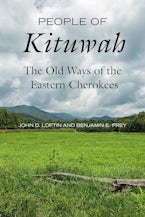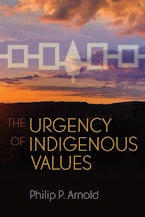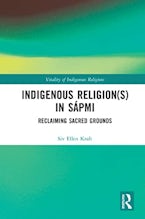- Home
- social science
- law
- Defend the Sacred

Defend the Sacred
Native American Religious Freedom beyond the First Amendment
400 Pages
- Paperback
- ISBN: 9780691190907
- Published By: Princeton University Press
- Published: April 2020
$26.95
In the two years since its publication, Michael D. McNally’s Defend the Sacred: Native American Religious Freedom Beyond the First Amendment boasts an American Academy of Religion panel, a book symposium in the Journal of Religion and Law, and a 53-page long (!) review in the Harvard Law Review. My task, it seems, is to say something new and ideally helpful about this publication. Fortunately, the insight of McNally’s work is not exhausted by previously published reviews and symposiums. Moreover, I believe I am the first reviewer to have the unenviable privilege of engaging the book post-Dobbs. I cannot help but think that the rightward shift in courts signaled by Dobbs raises new questions for McNally and his text. At the end of the review, I turn to those questions.
McNally’s central point is simple but crucial: the fight for Native American rights, sovereignty, and the protection of sacred lands and objects, require multiple forms of rhetorical resistance and legal strategies. More specifically, he argues for making Native American religious freedom claims stronger by “[conjoining] such claims with elements of federal Indian law and with the emerging norms of international Indigenous rights in international human rights law” (10). This proposal stands against recent trends in scholarship that suggest the First Amendment and “religious freedom” language are no longer viable tools for Native Americans since, historically, White Christian groups have used it to shore up religious hegemony in America.
McNally recognizes the truth of these critiques and acknowledges that religious freedom claims often fail Native American peoples—especially when those claims exclusively appeal to the First Amendment. However, he argues that Native peoples and advocates, by pairing religious freedom rhetoric with other types of law, can recalibrate their appeals to succeed in ongoing and future litigation (17). His book chronicles how Native Americans moved beyond First Amendment appeals by employing religious freedom rhetoric within other fields of law—environmental, historic preservation, human rights, and federal Indian—to protect traditional ways, lands, and sacred objects. He suggests these cases provide a map for the future of Native American religious freedom claims.
A significant reason religious freedom claims have failed Native Americans in the courtroom is because “religion as a category has failed to capture what’s distinctive about Indigenous religions, local as they are to particular peoples and to living well on particular lands and waters” (xv). Scholars acknowledge that religion in US culture and its courts are overwhelmingly imagined as Protestant, White, and Christian. Consequently, the bona fide status of a religion is often dependent on how closely it resembles Protestantism. This dynamic presents problems for Native Americans in legal proceedings since indigenous religions are “oriented to space in contrast to the defining orientation of ‘Western Traditions’ to time” (8). In line with Protestant models of religion, courts tend to think of Native American religion as “spirituality,” as a kind of religiosity not connected to place or any particular group of people. In McNally’s view, this fundamental misunderstanding has resulted in the dismissal of many legitimate First Amendment religious freedom appeals.
Thus, one of McNally’s key goals in linking religious freedom claims to various fields of law is to carve out court mechanisms that better recognize the plurality of place-based Native American religions. Of course, it is not so much that McNally theorizes this normative position, but shows through various case studies that such a strategy has already been successfully used by Native groups and advocates. His work weaves these examples into a coherent narrative that shows religious freedom claims and rhetoric are still relevant for Native people beyond First Amendment appeals.
McNally’s scholarship on Native American legal contestations is beneficial to any scholar of religion or law. Indeed, his work is likely the most comprehensive on Native American religions and law to date. While the book is necessarily detailed, and primary legal documents cited make McNally’s text a difficult read for undergraduates, the manuscript is ideal for a graduate seminar. I highly recommend the book to any scholar of Native American and Indigenous studies.
Yet, given the current makeup of the Supreme Court and rightward trends in lower court decisions following Dobbs, some of McNally’s suggestions seem overly sanguine. His work necessarily presumes that specific legal recognitions of Native religion—ones which will divest power from the US government, its interests, and dominant racial and religious groups—is a possibility, and even likely if actors apply the right pressure in the right places. However, as Martin Luther King Jr. points out in his 1963 “Letter from Birmingham Jail,” “history is the long and tragic story of the fact that privileged groups seldom give up their privileges voluntarily.” One can wrest power from the privileged, but can it be done primarily via the courts—that is, through the very legal system designed to protect the status quo?
A meticulous scholar, McNally preempts such a critique in the book, stating that even while the courts protect the interests of those in power, they can be commandeered by those interested in creating change (17). Maybe so, but with decades of precedent reversed in the last year alone, cynicism is alluring. Many Americans (perhaps most) see Dobbs as an unabashed power grab by the conservative Christian Right. It makes me wonder if McNally’s position on Native American religious freedom claims and legal strategies remains the same. Does his cautious optimism remain? And if yes, might he send me his self-care routine? I, too, would like to retain a modicum of hope in our legal system.
I may be overestimating the implications of Dobbs and the rightward shift in court rulings on religious freedom claims in the US—I am a religious ethicist and not a legal scholar, and I humbly accept that I am stretching beyond the book’s scope (although the scope is vast). Regardless, this book will continue to generate critical insights and questions about religion and law, the politics of indigeneity, and the role of scholars in expanding definitions of “religion” for inclusive ends. While this was my first-time reading McNally, it will not be my last. I look forward to his future publications, especially those that might address the questions I raise in this review.
James. W. Waters is a PhD candidate in Religion, Ethics, and Philosophy at Florida State University.
James W. WatersDate Of Review:March 7, 2023
Michael D. McNally is the John M. and Elizabeth W. Musser Professor of Religious Studies at Carleton College. He is the author of Honoring Elders: Aging, Authority, and Ojibwe Religion and Ojibwe Singers: Hymns, Grief, and a Native Culture in Motion.











